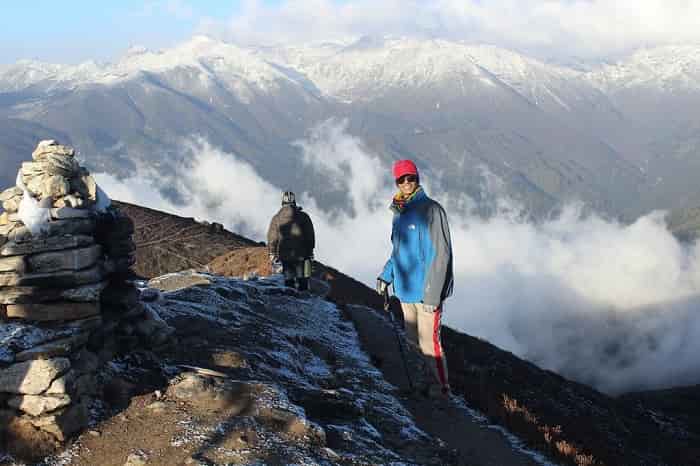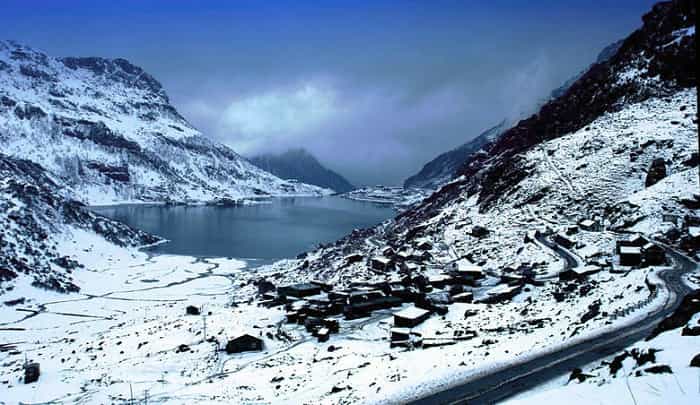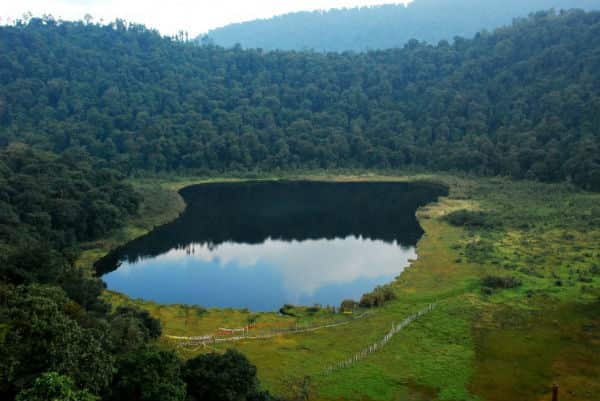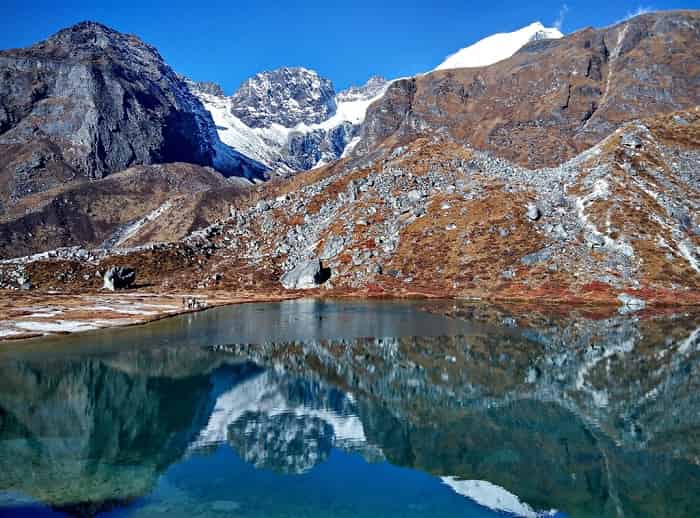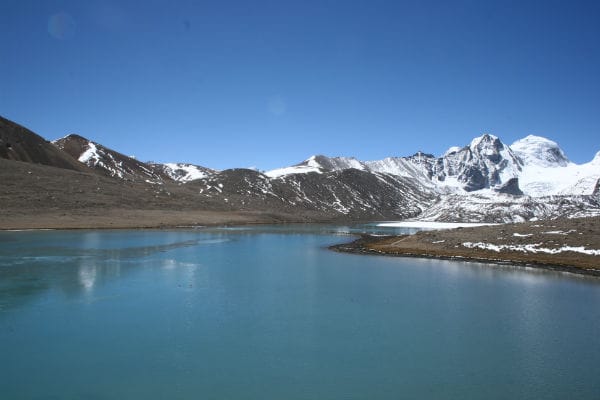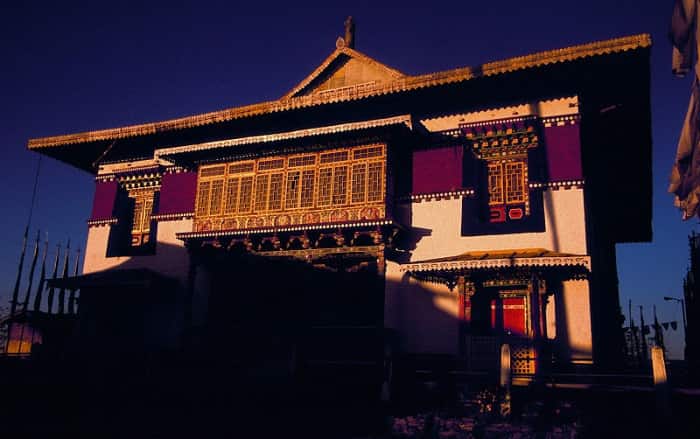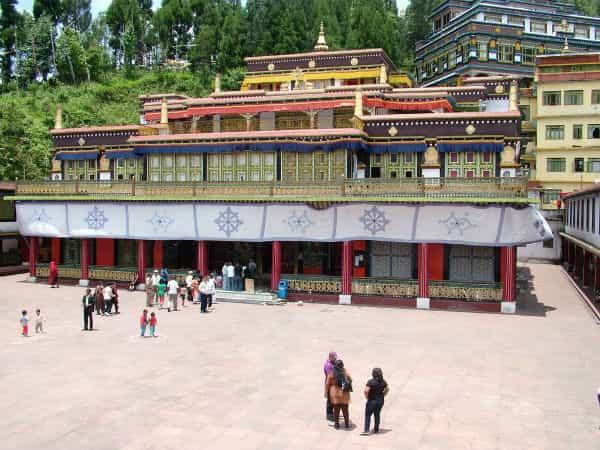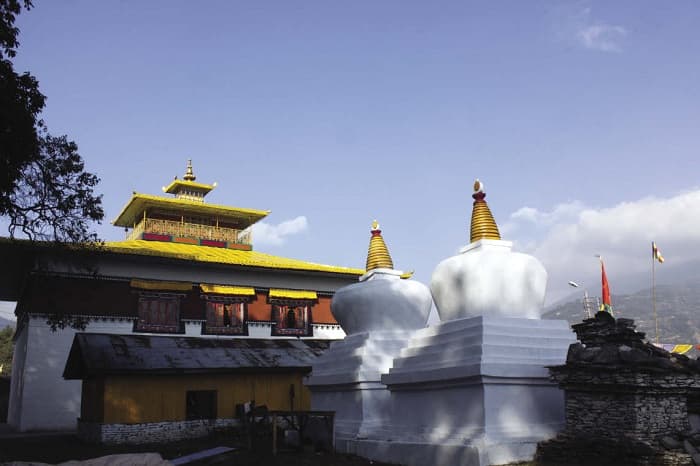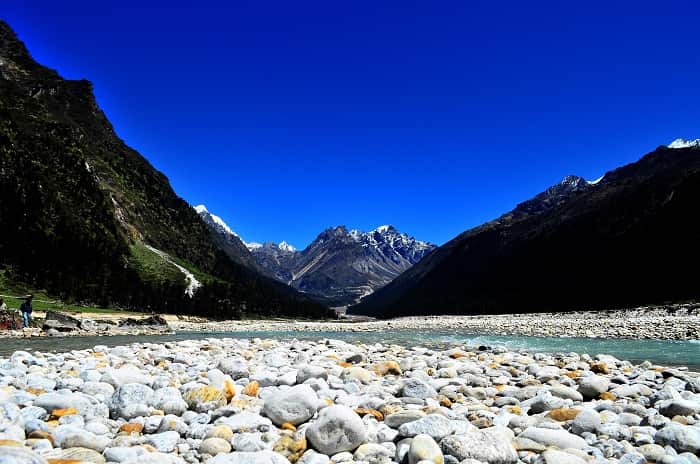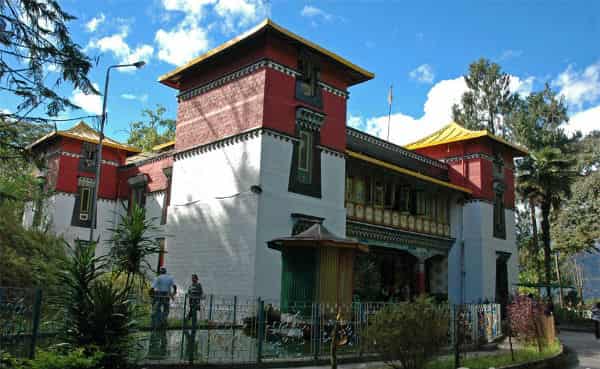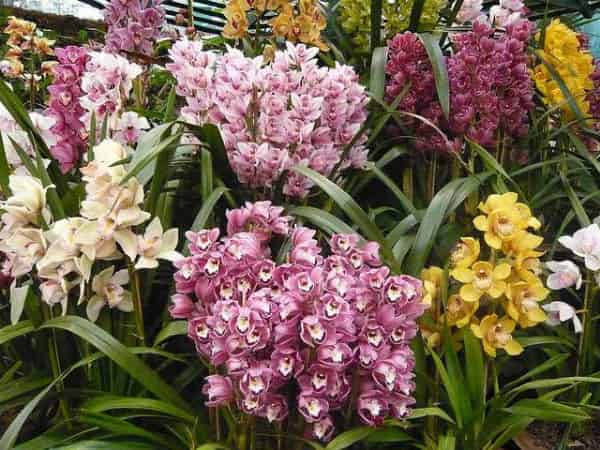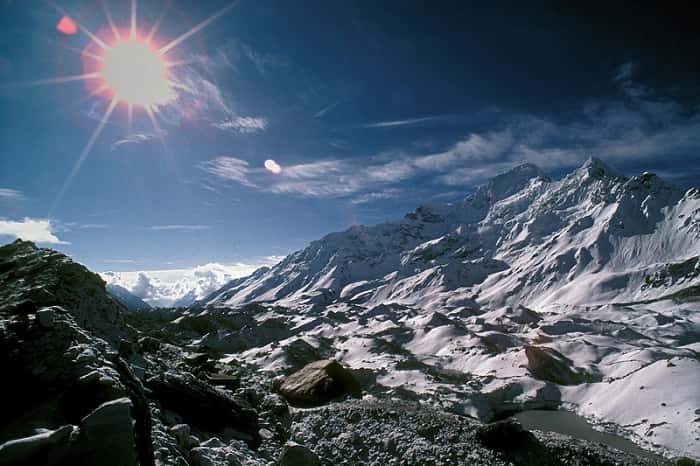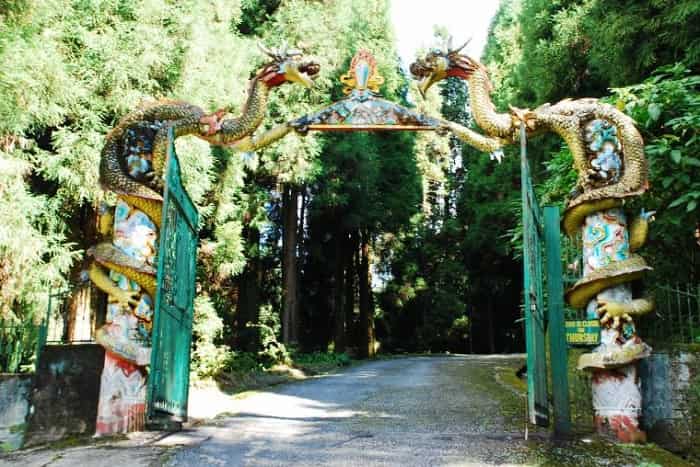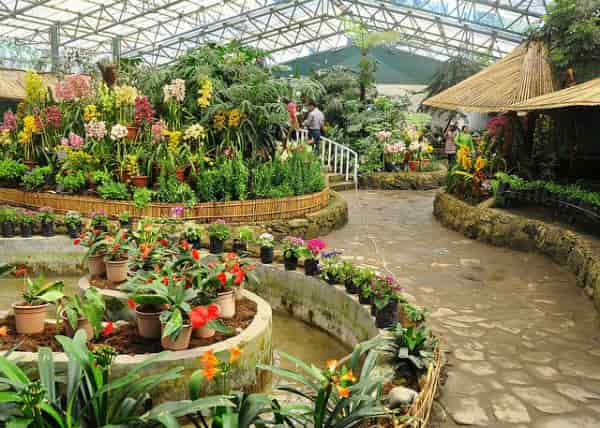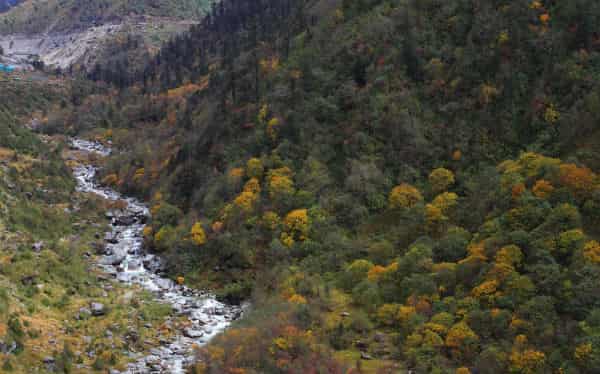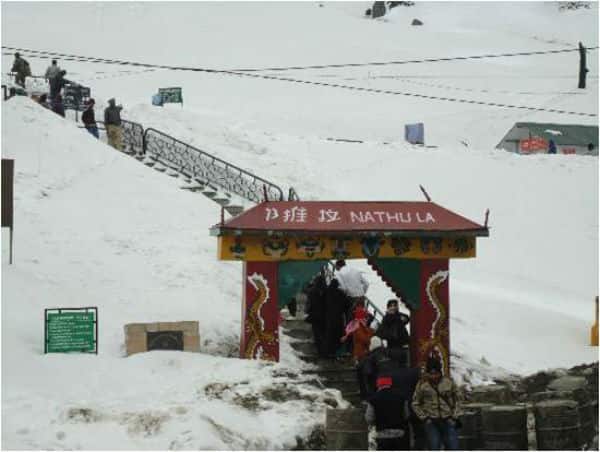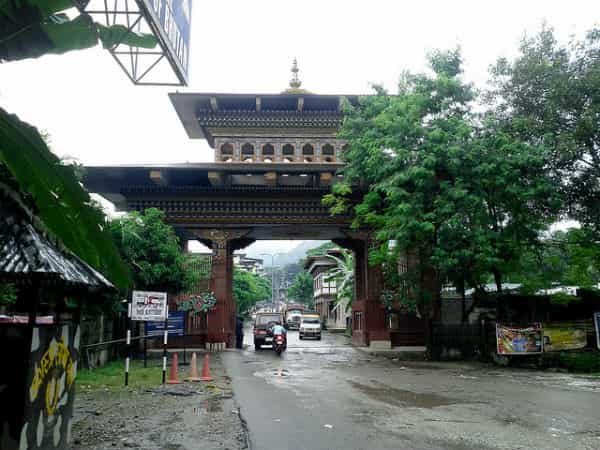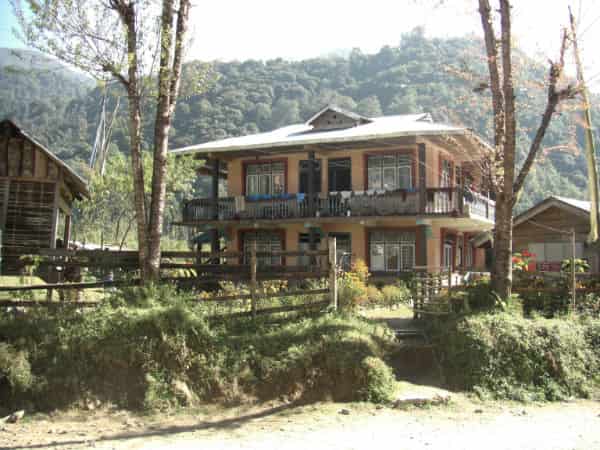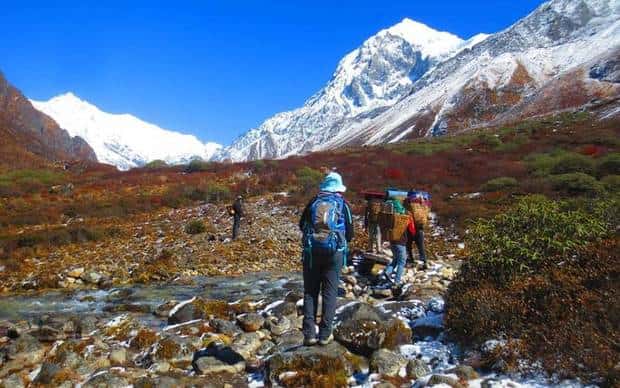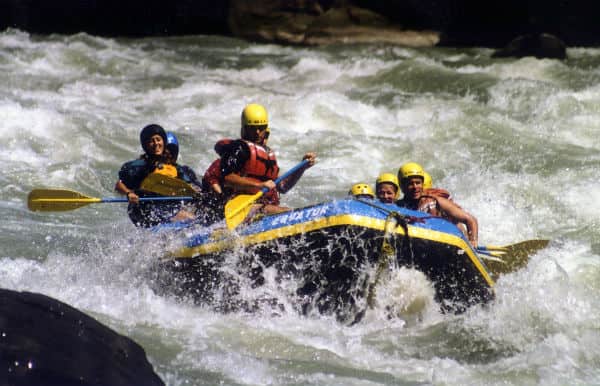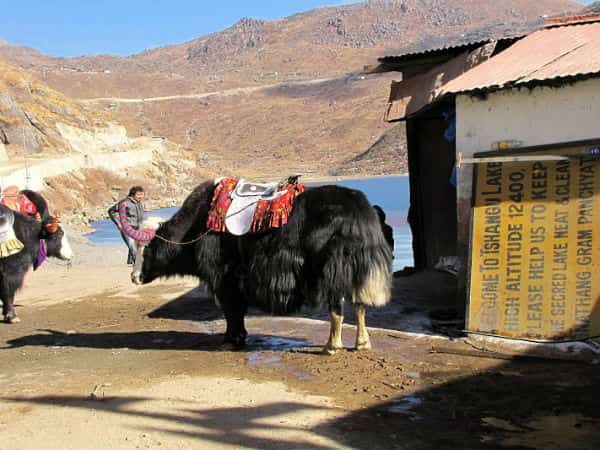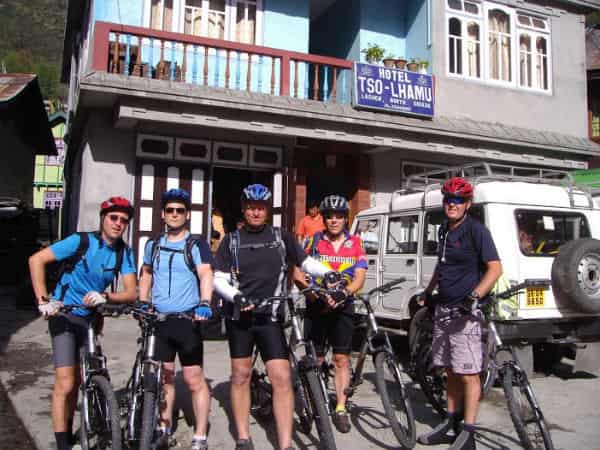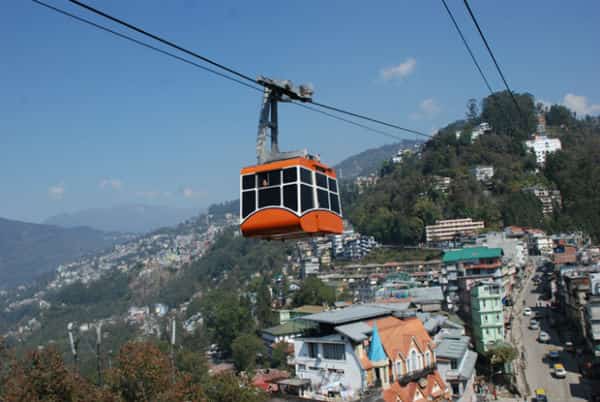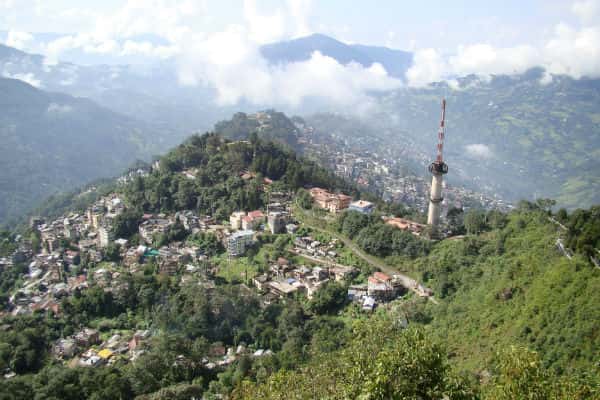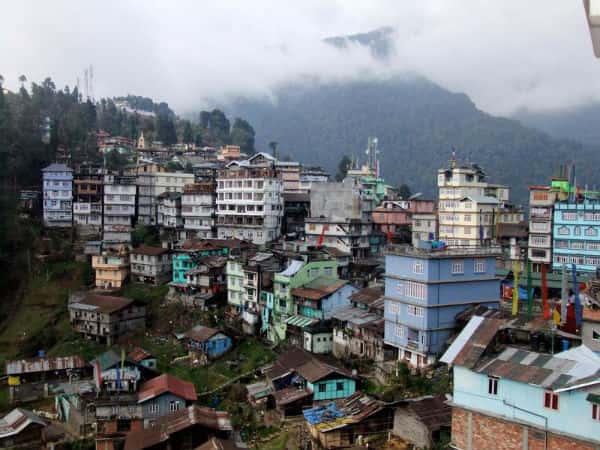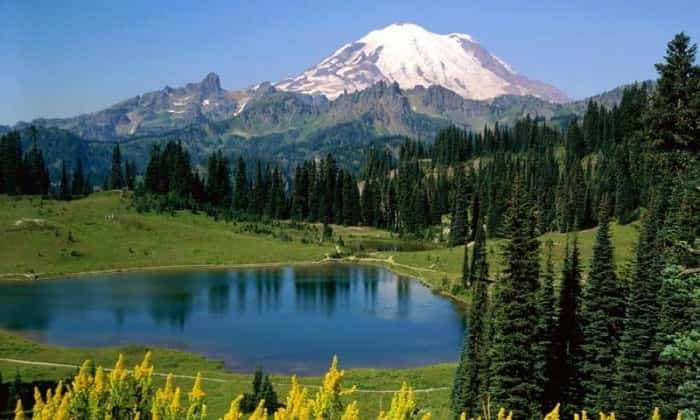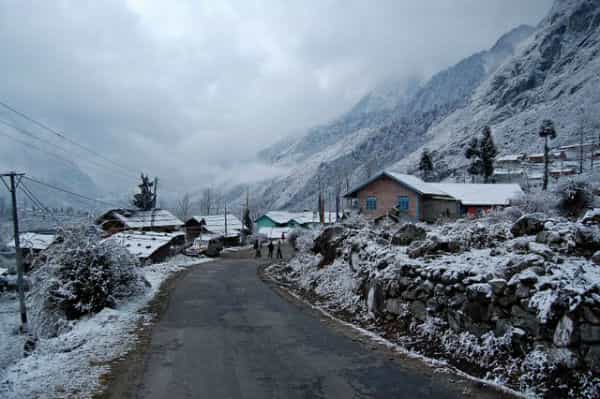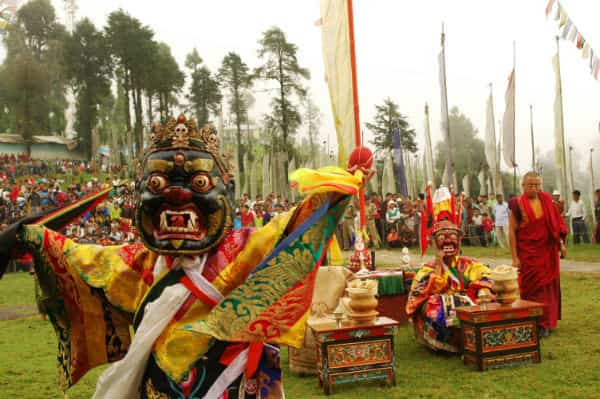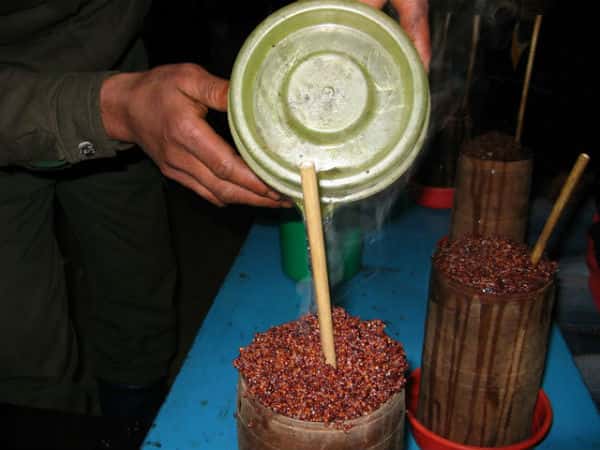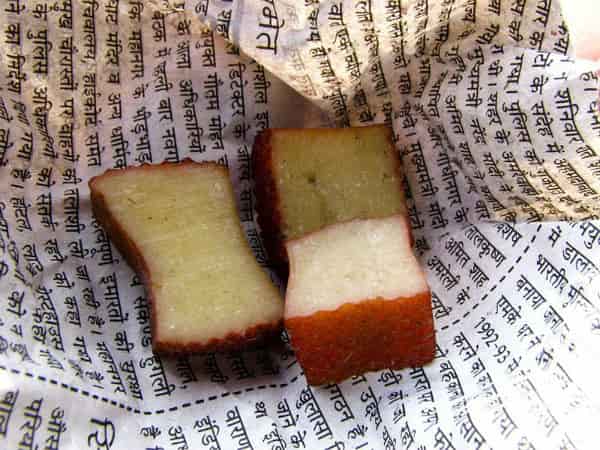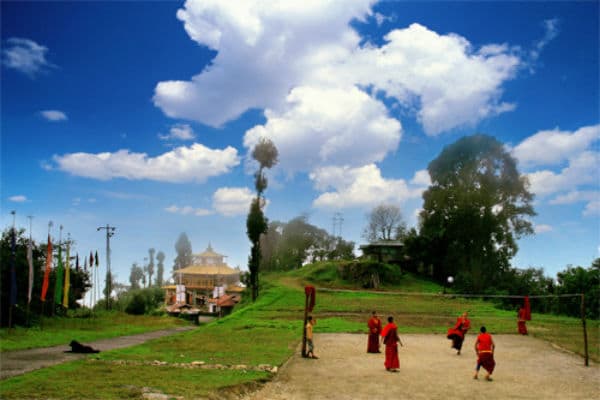Last Updated on August 4, 2022
The country’s smallest state Sikkim falls next to Goa in terms of size. The beauty of Sikkim, however, is limitless and unrivaled and that makes this state of the lower Himalayas an ideal holiday retreat for passionate vacationers. The serenity and pristine nature of the place make it a much sought-after tourist destination. This beautiful state shares a border with Nepal in its west, with Bhutan in its south-east, and with Tibet autonomous region of China in its north.
The major attraction of this state is its mountainous terrains that have an elevation of 280 meters to 8585 meters. The awesome heights and charm of Sikkim make it an ultimate destination for various adventure activities like trekking. Sikkim tourism has been flourishing a lot lately and Sikkim has been selected by Lonely Planet as the most important place to visit in 2014. The festivals and food in Sikkim are a must-try and the tourist attractions will just blow your mind away with so much scenic beauty and adventure to enjoy.
So, let’s discuss some places to visit and tourist spots in Sikkim:
- Yuksom and the Dzongri Trail
- Changu Lake
- Khecheopalri Lake
- Samiti Lake
- Gurudongmar Lake
- Pemayangtse Gompa
- Rumtek Monastery
- Tashiding Monastery
- Ranka Monastery
- Yumthang Valley
- Namgyal Institute of Tibetology
- Flower Exhibition Center
- Khangchendzonga National Park
- Himalayan Zoological Park
- Deorali Orchid Sanctuary in South Gangtok
- Kyongnosla Alpine Sanctuary
- Nathula Pass and the Old Silk route
- Bhutan Border
- Village Tourism in Sikkim
- Trekking in Sikkim – Goecha La
- River Rafting the Teesta and Rangeet River
- Yak Safari-Dzongri region and Tsomgo Lake
- Mountain Biking – Gangtok
- Gangtok Ropeway Cable Car
- Gangtok
- Ravangla
- Pelling
- Lachung
- Land of Festivals
- Chhaang
- Chhurpi
- Sikkim Monks
1. Yuksom and the Dzongri Trail

One of the most popular Kanchenjunga treks is the trekking trail from Yuksom to Goecha La pass, which lies at a high altitude of 4990 meters. This trek is challenging but worth the effort because of both scenic beauty and vegetation can be seen only in this part of the world. The huge valleys are a reward on this Sikkim Kanchenjunga trekking trail. The next stop is Dzongri and trekkers pass through the Tshokha village to reach the Phedang Alp. From here till the trekkers reach the Dzongri summit, the view contains of mountains like Kabru.
2. Changu Lake

Changu Lake is another hot favorite tourist destination. The placidity of the calm waters has an incredible effect on the soul and is a quiet den for nature lovers. Enjoying an indolent fishing session along this lake is a very pleasant experience. Taking a stroll along this lake is a breathtaking one. Changu Lake has different shades to its personality. It brims with natural delight and also has a mythological touch to it. It turns extremely cold into freezing ice during winters and looks ethereal.
3. Khecheopalri Lake

The Khecheopalri Lake is a sacred lake of the Buddhist and Hindu religions. According to Hindu mythology, it is said to be the footprint of Goddess Tara. This lake is also called the “wishing lake”, whose shores are surrounded by dense forests. Despite that, there is not even a single leaf floating on the surface of the lake because birds and ducks pluck the leaves from the lake as soon as it falls on the water’s surface. This gives a clear and untouched appearance. Tourists prefer to visit the Khecheopalri Lake tour so that they can experience the mystic beauty and the charisma of this sacred lake.
4. Samiti Lake

After the trekkers have reached Thangsing, they pass through some green meadows and finally reach Onglathan. When trekkers cross this and other glacial moraines, they reach the mesmerizing Lake Samiti from where the actual trek to Goecha La begins. This lake is a footstep on the trail between Yuksom and Goecha La and offers spectacular views, especially during winters. This tourist attraction is growing in significance because of the vivid and mystic beauty that it offers and tourists are so fascinated by its appearance that they are automatically drawn towards it.
5. Gurudongmar Lake

Gurudongmar Lake is a high-altitude lake close to the Tibet border in North Sikkim. It is basically a land of animals like yaks and blue ships in Sikkim and Tibet. The snow-fed milky water of the lake is the most eye-catching thing. It is encircled by snow-covered mountains and this lake is known to freeze during winters all over except in one spot, which the devout belief is sacredly blessed. The Chinese-Tibetan border is only kilometers away from this lake. There is a temple of the Guru beside the lake. This is the reason it is famous among tourists as devotee tourists and even army personnel offer prayers at this temple.
6. Pemayangtse Gompa

Pemayangtse Gompa is one of the oldest and most significant Nyingmapa Gompas. It is set magnificently on a hilltop overlooking the Rabdentse ruins. Over there, the atmospheric compounds are ringed by gardens and traditional cottages of monks walled in unpainted stone. The prayer hall is colorfully proportioned and the doors and windows are painted with Tibetan motifs. Upstairs, there are fierce statues depicting all eight Padmasambhava’s incarnations. On the top floor, Zandog Palri is a beautiful seven-tiered model, which is handmade over years by a single dedicated lama.
7. Rumtek Monastery

Rumtek Monastery is a famous and the largest monastery of Sikkim. It is located on a hill. It is a popular tourist attraction in Sikkim and it once served as the seat of Rangjung Rigpe Dorje when he was in exile. The monastery houses sacred objects such as the Golden Stupa. The surrounding views and spectacular and people love to get photographed there. It particularly belongs to the Kagyupa sect of Buddhism and is, therefore, the very sacred place of worship for many Buddhists.
8. Tashiding Monastery

Tashiding Monastery is a sacred Buddhist monastery of the Nyingma sect that belongs to Tibetan Buddhism in western Sikkim. The best part about this monastery is that it is located on top of a hill rising between Rathongchu and the Rangeet River. It is one of the holiest and most sacred monasteries in Sikkim and this is why a lot of Buddhist tourists make a visit to this monastery. It is considered to be a very sacred part of the Buddhist pilgrimage circuit.
9. Ranka Monastery

The Buddhist culture of Sikkim makes it home to more than 200 monasteries of which a significant one is the Ranka Monastery. The Ranka Monastery is a very peaceful place where a lot of tourists and monks stop by to visit this Buddhist pilgrimage. It is situated in Lingdum and is locally known as Lingdum University. It is basically known for its architecture and aesthetic value that draws tourists towards it. There is also a fabulous collection of colorful Tibetan paintings called Thangkas that look very elegant on the walls. It is a must-stop by tourist spot when you are exploring Sikkim.
10. Yumthang Valley

Yumthang Valley is a popular spot while trekking. It is one place that no tourist would like to miss during the Sikkim rhododendron trekking tour. The good part about this valley is that it is one of the most picturesque places in the world with swathes of beautiful Himalaya flowers blooming in the valley. These flowers include the blue poppy, several species of rhododendrons, rhubarb, and some other spectacular species of flowers canvassing the earth. In short, it is the place of a true nature lover and such a person would not be able to miss this valley’s aesthetic appeal.
11. Namgyal Institute of Tibetology

Namgyal Institute of Tibetology is one of the most popular learning centers for Buddhists. This institute is popular because it is home to the largest manuscripts and collection of books related to Mahayana Buddhism. The research wing of this institute is very famous and this is proved by the fact that this institute has some thirty thousand volumes of translations of the teachings of Buddhism. Thus, if you are touring Sikkim, then visiting this institute is a must for all the knowledge that you can gain about Buddhism teachings.
12. Flower Exhibition Center

The flower exhibition center is an average-sized greenhouse for nurturing exotic plants. What fascinates tourists about this flower exhibition center is that there are some exceptional species of flowers that you will not find anywhere else in the world. If you are visiting Sikkim during March time, then you must visit this center only for the variety of orchids that they have. It is absolutely spellbinding and the best thing you could offer to a nature lover. This center is in Gangtok’s White Hall complex. And is in line with the scenic stretch of landscaped gardens and tree-lined parks.
13. Khangchendzonga National Park

Khangchendzonga National Park was earlier called the Kanchenjunga National Park. It is a national park and biosphere reserve in Sikkim. This park gets its name from the mountain Kanchenjunga. There are many glaciers in the park including the Zemu glacier. You can find animals like the musk deer, Himalayan Tahr, and snow leopard in this park. There are temperate broadleaves and mixed forests consisting of oak, fir, maple, and willow. And this national park is home to 550 species of birds, which makes it a great destination for tourists to visit.
14. Himalayan Zoological Park

Himalayan Zoological Park is yet another popular tourist spot in Sikkim. This park is home to the red panda, Himalayan pheasant, Himalayan black bear, and Siberian tiger. These are some of the rare species that can be found here. This park creates a natural forest atmosphere for viewers. Tourists are also allowed to visit the snow leopard breeding center close to this zoological park. Moreover, the main aim of this park is to preserve the rare species of the snow leopard for future generations to come and see what this animal looks like.
15. Deorali Orchid Sanctuary in South Gangtok

Deorali Orchid Sanctuary is located next to the Namgyal Institute and is known for its very rare collection of orchids. It is basically a nursery that has some rare and elegant collections of orchids that you would not find anywhere else in the world. Moreover, the sanitation and other arrangements for tourists are much better here than in any other tourist spot in Sikkim. The different varieties of orchids that are available in this nursery are a fascination for tourists touring Sikkim, especially during the time of March when the orchids are blooming beautifully.
16. Kyongnosla Alpine Sanctuary

Kyongnosla alpine Sanctuary is a wildlife sanctuary that is located in east Sikkim. It is located around the area adjoining Changu Lake along Nathula Road. This sanctuary is rich in both flora and fauna. It is home to some rare species of orchids and rhododendrons spread evenly along tall junipers and firs. These are some of the most important plants grown in this Sanctuary. Some plants like Rhododendron Niveum, which are almost on the verge of extinction, are added to this sanctuary and this is what makes the view of this sanctuary very captive and attractive.
17. Nathula Pass and the Old Silk route

Nathula Pass is situated on the border of India and China. It was also known as the old Silk Route because it was considered to be the most important route of trade between the silk traders from Tibet and Sikkim. It is from this route that the Tibetans fled from Tibet after China captured it in 1950. Nathula pass is only 56 kilometers away from the capital city of Gangtok. The pass is also famous for its scenic beauty and dense vegetation of flora and fauna. It is a perfect retreat from noisy and crowded cities and a must-visit place for tourists visiting Sikkim.
18. Bhutan Border

By road, you can enter Bhutan through the India-Bhutan border. You need to apply for a permit if you wish to cross this border, comprising photos and a valid passport. Bhutan is called the land of golden monkeys, as these langurs are a common site of this country. These monkeys are a common sight in Bhutan and some parts of northern India. The capital city of Thimphu is a beautiful place with elegant monasteries and mountain ranges. The museum atop a hill is filled with Bhutanese history. Thus, if you are a person with historical interests, it is a place to see.
Sikkim is not only abode with natural beauty. The people, culture, and food are equally interesting and rich.
19. Village Tourism in Sikkim

One can experience the virgin beauty of the Himalayan ranges through this village homestay model which allows tourists to stay with the locals in the village and have the mesmerizing beauty of the state unraveled to them. The government of Sikkim wants to promote community-based tourism while helping local communities benefit fully from the economic opportunities of low-impact tourism.
Once you are done sightseeing in Sikkim, there are some other activities that will keep you engrossed in your Sikkim tour. These are:
20. Trekking in Sikkim – Goecha La

One of the most famous treks in Sikkim is the Goecha La trek. Trekking in Sikkim is considered a very adventurous sport by tourists and this is one trek that is challenging but worth all the effort. Goecha La trek is famous for superb mountain views, birds, and pristine forests. The Goecha trek is an extension of the Dzongri trek and is set amidst some rumbling landscapes and high mountain glaciers. This strenuous trek takes all along the Singalila ridge and climaxes at Goecha, opposite the massive Kanchenjunga, the third highest peak in the world. Thus, for tourists who look forward to trekking, this trail is definitely worth giving a shot at.
21. River Rafting the Teesta and Rangeet River

White water river rafting is very popular in Teesta and Rangeet rivers in Sikkim. However, the time that is considered right for rafting in Sikkim in these rivers is between October and November. This is because the flow and intensity of water are just right to make the river rafting experience in Sikkim a memorable one, thus, if you are an adventure freak and visiting and touring Sikkim during October and November, then river rafting in Teesta and Rangeet rivers is a must-do sport for you.
22. Yak Safari-Dzongri region and Tsomgo Lake

Yaks are the largest animals in this region. Safaris on the yaks bring tourists closer to the lifestyle and culture of the people in Sikkim. The safari on the yak in the Dzongri region and the Tsomgo Lake is an interesting one. This is because this unique experience of yak safari is not prevalent in most parts of our country and that is why the tourists who visit Sikkim make sure they try this safari for sure. It is an exceptional adventure to witness that gives lifetime meres.
23. Mountain Biking – Gangtok

During Gangtok tours, tourists make it a point to try adventures like mountain biking and rafting. These experiences are one of a kind because they cannot be replicated in any other part of our country. The mountain biking beginning from Gangtok till Singtam or beyond and includes stops like Rumtek, Temi Tea Garden, Ravangla and Somarey is an interesting one. This is because the terrain of the mountain is such that it is ideal for carrying out a sport like a mountain biking, which is exceptional in itself and not prevalent usually in other parts of the country.
24. Gangtok Ropeway Cable car

The Gangtok Ropeway Cable Car is a mind-blowing experience in itself. When you climb on this cable car, you will be able to witness some breathtaking views of this place. This cable car journey lasts merely about 20 minutes and gives you a birds eye view of the beautiful capital city of Sikkim. The cable car offers a fabulous tour of the city from the top and is definitely an unforgettable experience for a tourist who is visiting Sikkim for the very first time.
Apart from the tourist spots and adventures, the tourists will be mesmerized by some key cities that offer a lot to the tourists. Let’s have a look at them:
25. Gangtok

Gangtok is the exuberant capital city of Sikkim and offers some real mesmerizing views to tourists. It is a colorful and picturesque place that attracts tourists to make their Sikkim tour memorable. The trip will become unforgettable because Gangtok is placed in the lap of scenic and natural ambiances of the Himalayas. This city is popular because of its tranquil beauty and tribal culture. The rich flora and serene Buddhist monasteries are the perfect stop for all tourists to visit. During the Gangtok tour, tourists are also tempted to try adventures like cable car, mountain biking, and river rafting. Thus, it is a complete package of entertainment to visit this city.
26. Ravangla

Ravangla is situated on the ridge separating the Teesta valley from the Rangeet valley. Ravangla has become south Sikkim’s latest tourist attraction. It offers some unobstructed views of the snow peaks and this is what drives the tourists to pay a visit here. There are some not to be missed breath-taking views of the Kanchenjunga along with its sister peaks of Kabru, Siniolchu, Pandim, and many others. Ravangla is located at the foot of the Maenam hill, housing a small hermitage.
27. Pelling

Pelling is nestled on a hilltop from where you can enjoy natural splendor to the fullest. If you visit Khangchendzonga, then you are sure to witness a jaw-dropping view of Pelling’s dawn that will keep you spellbound. Pelling’s ethereal beauty has remained untouched by the advancement of the machine age to a great extent and this is why loads of tourists are attracted to visit this place every year. Pelling is a simple and subtle place that gives an exclusive experience of living closer to Mother Nature.
28. Lachung

The picturesque mountain village of Lachung is covered with snow-capped mountain peaks, breathtaking waterfalls, sparkling streams, and apple orchards for a perfect holiday destination. Lachung is famous for its apples, apricots, and peaches. The handicraft centers in Lachung must be visited if you are fond of some exquisitely woven rugs and blankets. Lachung still retains its distinct tradition and culture, including the system of self-governance.
After the cities, let’s see what Sikkim celebrates. The festivals are some of the best and unique ones. Let’s have a look at it:
29. Land of Festivals

Sikkim is the land of festivals. A festival called Lasoong marks the end of the harvest season and also the end of the 10th month of the Tibetan lunar year, around December time. Cham dances are performed at the palace and Rumtek monasteries. Then there is Dasain, which is the Durga Puja, which falls in the month of October. It symbolizes the victory of Goddess Durga over evil. Then there is a festival called Tihar, which is a festival of lights and marks the return of Lord Rama to his hometown after the exile. This is about victor over Ravana and covers a period of 5 successive days. Traditional carols are sung during this festival.
Sikkim is also famous for its food and cuisines. Let’s discuss them in a little detail:
30. Chhaang

Chhaang is local alcohol made out of rice, millet, and barley. It is very commonly drunk in Sikkim and some parts of Tibet. They drink it at festivals and funerals, while playing or working, at all ages. Little kids get a taste of Chhaang and even elders get it too. It is drunk especially during the harvesting time because it is a time for celebration for people in Tibet and Sikkim. Farmers can’t afford to buy alcohol but Chhaang is prepared at home with barley and that is why the farmers also relish it.
31. Chhurpi

Chhurpi is dried smoked cheese eaten in Sikkim and the eastern Himalayas. It is made from the milk of a yak. It is prepared in a local dairy or even at home. The sergem is wrapped in cloth, usually jute bags, and pressed hard to get rid of the water. Then, it dries out and becomes similar to cheese. Finally, in this cheese-like stage, it is cut into pieces and hung over the smoke to make it stone hard. This is a relished dish for people in Sikkim and for travellers who are visiting Sikkim must try it for sure.
32. Sikkim Monks

Thus, it can be concluded that Sikkim is definitely a place worth visiting. From tourist spots to cities to adventure to festivals and food, Sikkim has it all. Sikkim tourism has been flourishing because of this reason and that is why so many tourists are looking forward to Sikkim tours and holidays for some really unforgettable experiences.
